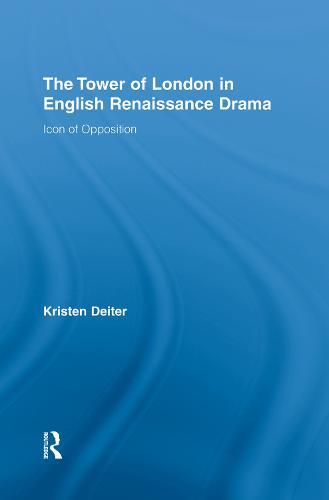Overview
The Tower of London in English Renaissance Drama historicizes the Tower of London's evolving meanings in English culture alongside its representations in twenty-four English history plays, 1579-c.1634, by William Shakespeare, Christopher Marlowe and others. While Elizabeth I, James I, and Charles I fashioned the Tower as a showplace of royal authority, magnificence, and entertainment, many playwrights of the time revealed the Tower's instability as a royal symbol and represented it, instead, as an emblem of opposition to the crown and as a bodily and spiritual icon of non-royal English identity.
Full Product Details
Author: Kristen Deiter (Marywood University, USA)
Publisher: Taylor & Francis Ltd
Imprint: Routledge
Weight: 0.362kg
ISBN: 9780415762540
ISBN 10: 0415762545
Pages: 14
Publication Date: 09 June 2014
Audience:
College/higher education
,
General/trade
,
Tertiary & Higher Education
,
General
Format: Paperback
Publisher's Status: Active
Availability: In Print

This item will be ordered in for you from one of our suppliers. Upon receipt, we will promptly dispatch it out to you. For in store availability, please contact us.
Reviews
"""This text offers a provocative and careful study that reassesses the role of the Tower of London by examining the architectural building as a theatrical showplace and an icon of terror in the early modern period. Deiter does a wonderful job of establishing that dramatic representations of the Tower expanded its iconographic meaning by focusing on the Tower as a site of instability, rather than of royal authority. She places her analysis within a larger historical context and a reading of a significant number of cultural artifacts, including diaries, portraits, tracts, poetry, ballads, and woodcuts…Readers interested in scholarship on cultural studies of architecture, artifacts, and the theater as a place for commentary on social and political dissent will find Deiter’s book of particular interest as it makes important contributions to each of these realms of inquiry."" --Anne-Marie E. Schuler, Ohio State University, Sixteenth Century Journal"
This text offers a provocative and careful study that reassesses the role of the Tower of London by examining the architectural building as a theatrical showplace and an icon of terror in the early modern period. Deiter does a wonderful job of establishing that dramatic representations of the Tower expanded its iconographic meaning by focusing on the Tower as a site of instability, rather than of royal authority. She places her analysis within a larger historical context and a reading of a significant number of cultural artifacts, including diaries, portraits, tracts, poetry, ballads, and woodcuts...Readers interested in scholarship on cultural studies of architecture, artifacts, and the theater as a place for commentary on social and political dissent will find Deiter's book of particular interest as it makes important contributions to each of these realms of inquiry. --Anne-Marie E. Schuler, Ohio State University, Sixteenth Century Journal
Author Information
Kristen Deiter is Assistant Professor of English at Tennessee Technological University, USA.



